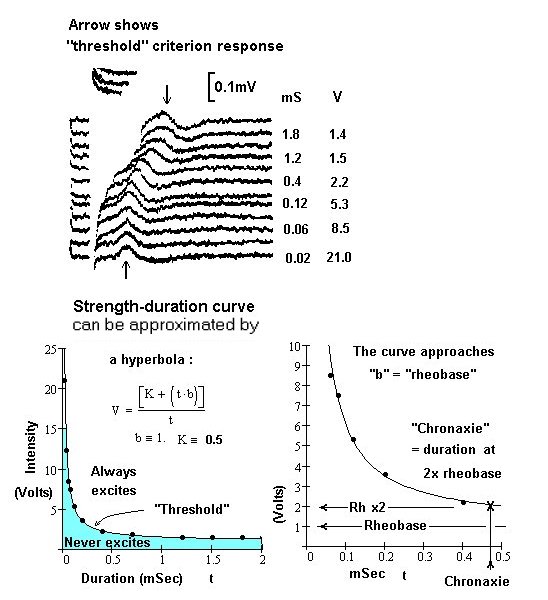
Next topic Previous topic Table of Contents
A stimulus must be of adequate intensity and duration to evoke a response. If it is too short, even a strong pulse will not be effective. A long pulse below a certain strength will evoke only a local nonpropagated response. Various combinations of strength and duration will suffice, however.
Increase the CRO gain and set the stimulus intensity of a 0.l-msec pulse to yield an AP about 1 cm in amplitude at high gain. Increase the duration to 0.2 msec and decrease the intensity in order to keep the same response. Continue finding different combinations of strength and intensity that yield the same criterion response.
Figure 28. Strength-duration curve. The stimulus voltage is a "packet of energy" delivered to the nerve. It displaces electric charge. A "weak" pulse (low voltage) of long duration can evoke the same response as a "strong: (high voltage) pulse of short duration.

Plot the combinations on a graph, duration in milliseconds on the X axis, intensity in volts on the Y axis. Draw a smooth excitability curve through the points. The plateau toward which the locus of points can be extrapolated is called the rheobase. A convenient measure of excitability is the chronaxie, a time obtained as the intersection of the curve by a line twice the rheobase.
Next topic Previous topic Table of Contents